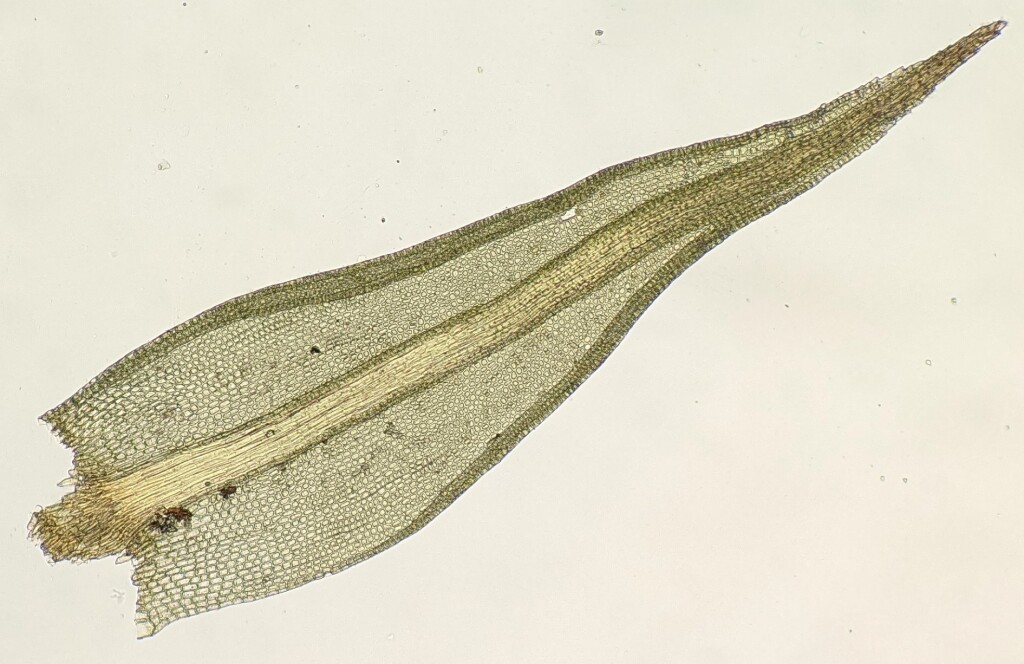Ceratodon purpureus
(Hedw.) Brid.Dioicous. Asexual reproduction occasionally by filamentous gemmae borne from axillary rhizoids. Open to dense tufts, turves or mats on soil, logs or rocks. Stems 3–15 (–40) mm long, erect, simple or sparingly branched. Leaves patent to erecto-patent when moist, appressed with falcately curved and spreading tips when dry, lanceolate, ovate-lanceolate or triangular-lanceolate, 0.35–2.8 mm long, 0.4–1 mm wide, carinate to concave; apices acute to short-acuminate or rarely obtuse; costae percurrent to slightly excurrent; margins entire or slightly denticulate toward apices, recurved or revolute, rarely plane, without a border; laminal cells in apical half quadrate, irregularly polygonal or short-rectangular, (7–) 9–19 (–22) μm wide, smooth; basal cells short-rectangular, 20–40 (–50) μm long, 12–18 μm wide, smooth. Setae (0.5–) 1–3 (–4) cm long, red, purplish or dark brown, occasionally yellow. Capsules suberect, inclined to horizontal, ellipsoid, obloid or cylindric, usually curved, deeply sulcate when dry, (0.8–) 1.3–1.8 (–3) mm long, strumose at base. Operculum conic, c. 0.5 mm long.
LoM, MuM, Wim, GleP, Brid, VVP, VRiv, MSB, GipP, OtP, Gold, CVU, GGr, NIS, EGU, HSF, HNF, OtR, Strz, VAlp. One of the most widespread moss species occurring in disturbed sites, particularly those that have been burnt, or sites with bare soil throughout the state. Also WA, QLD, NSW, ACT and Tas. Cosmopolitan.
 Spinning
Spinning
